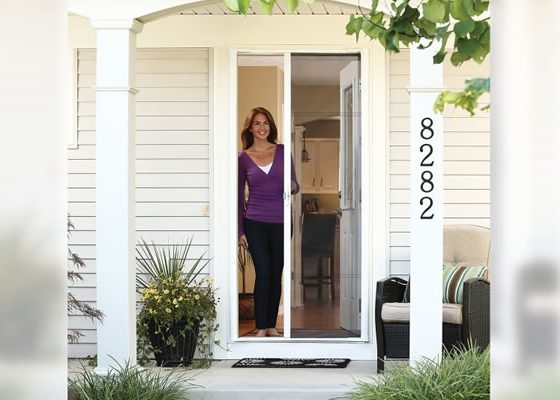Learning how to paint kitchen cabinets in a professional manner can save you the expense and hassle of replacing your cabinetry. While a project of this magnitude may seem daunting, most kitchen cabinets can be repainted over the course of a single weekend.
Choosing Materials
Knowing how to paint kitchen cabinets is not simply about technique: material choice is also important. Picking the right paint for your kitchen cabinets is not solely a matter of color, but also a question of durability and type. Choosing the correct painting tools can also greatly influence the success of your project.
Paint
Choose a cabinet or vanity paint that is specially formulated to resist lanolin. This will prevent the finish from degrading in areas that you regularly touch. Be sure to use a primer that is recommended for use with your particular paint for best results.
Tools
A spray gun is preferable when applying paint or primer to cabinets. This tool saves time and can be rented from most home improvement stores for a small fee. However a high-quality paintbrush and a steady hand can also achieve excellent results. Just be sure to apply the paint in the direction of the wood grain.
Hardware
Consider replacing your kitchen cabinet hardware if it is worn or outdated. If you do decide to buy new hardware, pick up some wood putty and sandpaper as well. You’ll need these materials to patch existing holes before you try to paint the cabinets.
Finishing Touches
A few extras can elevate basic cabinetry to better fit your decor and particular usage needs. Contemporary cabinets in a traditional home may be integrated into the decor by adding some inexpensive crown molding. Purchasing plate racks, spice receptacles, and other organizational devices can fix basic storage problems. Even a few extra shelves cut to order and installed can make you feel as though you have new cabinets.
Prep Work
Before you can begin to paint the cabinets, you must remove knobs and hinges from the doors and drawer fronts. You should also spend some time cleaning the cabinets and doors with a mild soap and water solution. Focus on areas that may have built up grease or fingerprints to be sure the paint will adhere properly.
Next, sand the cabinetry to break up the previous finish and allow the primer to adhere properly. If the finish is peeling or there are multiple coats of paint, you may have to use a chemical stripper to expose a workable surface. Keep in mind that the prep work you do now will help determine the appearance of your newly painted cabinets.
How to Paint Kitchen Cabinets Efficiently
Once the prep work is completed, the actual painting should be a simple task. The biggest mistake people make is beginning with the most visible areas. Instead, work on your technique and avoid paint-stained hands by priming and then painting the less-accessible areas first.
- Begin by priming the underside of the cabinet shelves.
- Prime the back and sides of the interior of the cabinet.
- Next, focus on priming the tops of the shelves.
- Paint the edges of the kitchen cabinets with primer.
- Complete the cabinetry by priming the front pieces.
- Paint the doors of the cabinets with primer, finishing one door before going on to the next.
Repeat these steps after the cabinets have dried to apply several coats of paint. Be sure to wait until each coat is completely dry before applying the next layer.
Final Steps
When your kitchen cabinets are completely dry, attach the hinges to the cabinet doors. Find a helper who will hold the doors in place while you attach them to the cabinets. Make sure that the doors are level with one another and make any necessary adjustments to achieve a uniform look.
With all of the doors in place, install the drawer pulls and other decorative hardware you removed before painting or the new hardware you purchased. Now is also the time to install any storage racks or other items you have bought to finish this project.
Additional Kitchen Updates
Painting your kitchen cabinets may only be the beginning of a larger kitchen renovation. Consider adding new ceramic tile, a different color scheme, or even installing hardwood floors in your kitchen. Carefully chosen updates can increase your home’s value and a patient homeowner can complete many of these projects without outside help.












